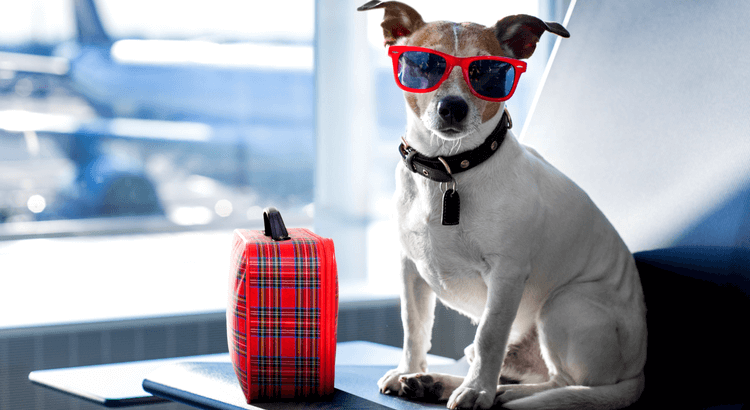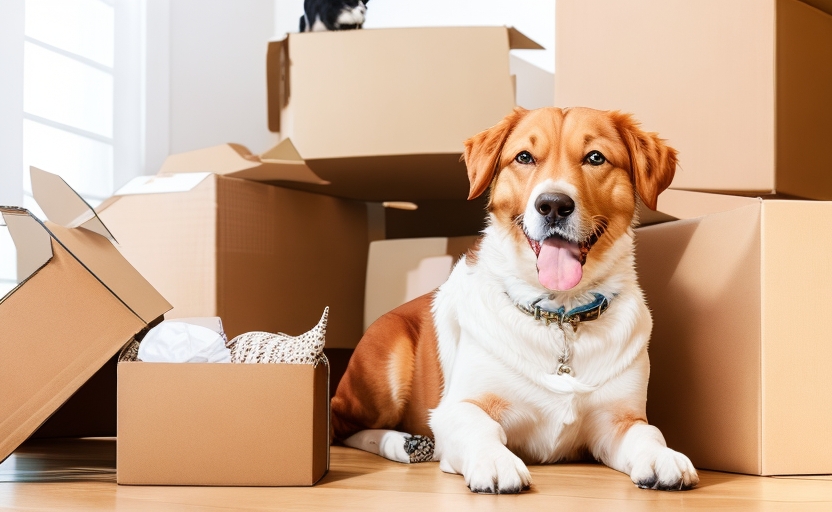5 Tips for Preparing Your Pets for Your Move The importance of preparing pets for a move can be a stressful experience for pets, as they thrive on routine and familiarity. Preparing them for the move is crucial to help minimize their stress and ensure a smooth transition.
Establishing a plan for a smooth transition By creating a well-thought-out plan and following these tips, you can make the moving process easier for you and your furry friends.
Understanding Your Pet’s Needs
Assessing your pet’s temperament and behavior Consider your pet’s personality traits, such as whether they are more anxious or adaptable, to tailor your approach accordingly.
Identifying specific needs or challenges Some pets may have special requirements due to age, health conditions, or behavioral issues. Addressing these needs will make the transition easier for them.
Researching Pet Regulations and Requirements
Checking local and state pet regulations in the new location. Different areas may have specific rules and regulations regarding pet ownership, such as breed restrictions or leash laws. Ensure you are aware of these regulations before your move.
Understanding vaccination and health certificate requirements Certain destinations may require specific vaccinations or pet health certificates. Ensure your pet is current on vaccinations and obtain any necessary certificates.
Informing Your Veterinarian
Scheduling a visit to the veterinarian Before the move, schedule a visit to the veterinarian to ensure your pet is in good health and discuss any concerns or specific needs related to the move.
Updating vaccinations and medications Update your pet’s vaccinations and ensure you have an adequate supply of necessary drugs to last through the moving process.
Packing and Moving Essentials

Creating a pet moving kit collar, leash, and identification tags. Ensure your pet wears a sturdy collar with an updated identification tag that includes your contact information.
Crate or carrier If you are traveling by air or need to confine your pet during the move, ensure you have a suitable crate or carrier that provides comfort and security.
Introducing Your Pet to the Carrier or Crate
Gradual acclimation to the carrier or crate. Allow your pet to become familiar with the carrier or crate by gradually introducing them to it before the move. Start by leaving it open in a familiar and comfortable space and gradually encourage your pet to explore and spend time in it.
Using positive reinforcement techniques, Reward your pet with treats and praise for entering and staying in the carrier or crate. This will help create positive associations and reduce anxiety.
Maintaining Routine and Familiarity
Keeping feeding and exercise routines consistent During the moving process, try to maintain your pet’s regular feeding and exercise schedule as much as possible. This will provide them with a sense of familiarity and help reduce stress.
Maintaining regular playtime and interaction. Engage in regular play sessions and spend quality time with your pet. This will provide them with comfort and reassurance during the transition.
Preparing for Travel

Choosing the best mode of transportation for your pet. Air travel considerations If you are traveling by air, familiarize yourself with the airline’s pet policies and requirements. Ensure that your pet’s carrier meets the airline’s specifications and make necessary arrangements in advance.
Ensuring comfort and safety during travel: Ensure your pet is comfortable by providing adequate ventilation, temperature control, and minimizing loud noises. Ensure they have access to fresh water and a comfortable resting area.
Updating Identification and Contact Information
Ensuring your pet’s identification tags are up to date. Check that your pet’s identification tags have your current contact information, including your new address and phone number.
Updating microchip information If your pet has a microchip, contact the company to update your contact information in their database.
Introducing Your Pet to the New Home
Creating a designated area for your pet upon arrival. When you arrive at your new home, set up a specific area for your pet with their bedding, toys, and everyday items. This will give them a sense of security and help them adjust quickly.
Gradually introduce your pet to different areas of the house. Allow your pet to explore different areas of the place gradually. Start with one room and gradually expand their access to other sites as they become more comfortable and familiar with their surroundings.
Establishing a New Routine
Transitioning your pet to a new feeding and exercise schedule Gradually transition your pet to a new feeding and exercise schedule that aligns with your new routine. Make adjustments slowly to minimize any disruption or stress.
Maintaining consistency and structure Stick to a consistent daily routine for your pet, including feeding times, exercise, and playtime. This will provide them with a sense of stability and comfort.
Exploring the Surrounding Area
Take your pet on short walks or outings in the new neighborhood. Take your pet on short walks or outings in the new neighborhood to familiarize them with their new surroundings. This will help them become more comfortable and confident in their new environment.
Identifying nearby parks and pet-friendly places Research nearby parks, trails, and pet-friendly establishments where you can take your pet for exercise and socialization. This will help them adapt to the new area and allow them to meet other pets and people.
Reestablishing Social Connections

Finding local pet-related activities or groups Look for local pet-related activities or groups in your new community. This could include dog parks, training classes, or social events where you and your pet can meet other pet owners.
Scheduling playdates or visits with other pets. Arrange playdates or visits with other pets, if possible. This will provide your pet with opportunities for socialization and help them build new friendships in the new neighborhood.
Dealing with Anxiety or Stress
Recognizing signs of anxiety or stress in your pet Be aware of symptoms of anxiety or stress in your pet, such as excessive panting, pacing, hiding, or changes in appetite. If you notice these signs, take steps to help alleviate their stress.
Implementing strategies to help alleviate anxiety Provide your pet with a safe and secure space in the new home, use calming techniques like soothing music or pheromone diffusers, and offer plenty of mental and physical stimulation to help alleviate anxiety.
Conclusion
5 Tips for Preparing Your Pets for Your Move Preparing your pets for a move requires careful planning and consideration of their needs. These five tips can help ensure a smoother transition and reduce stress for your beloved pets by understanding their needs, researching pet regulations, informing your veterinarian, packing essential supplies, introducing them to carriers or crates, maintaining routines and familiarity, preparing for travel, and updating identification.
How long before the move should I start preparing my pets?
It’s best to prepare your pets at least a few weeks before the move to allow them enough time to adjust gradually.
Is it necessary to update my pet’s microchip information?
Yes, updating your pet’s microchip information is crucial to ensure their safe return in case they get lost during the move.
Can I introduce the new home to my pet on the same day as the move?
It’s better to arrange a separate visit to the new home before moving day to familiarize your pet with the environment.
What should I do if my pet shows anxiety during the move?
Provide your pet with a calm and comforting environment, offer reassurance, and consult a veterinarian for additional guidance.
How long does it usually take for pets to adjust to a new home?
The adjustment period varies for each pet. It may take a few days to a few weeks to fully settle into their new surroundings.
